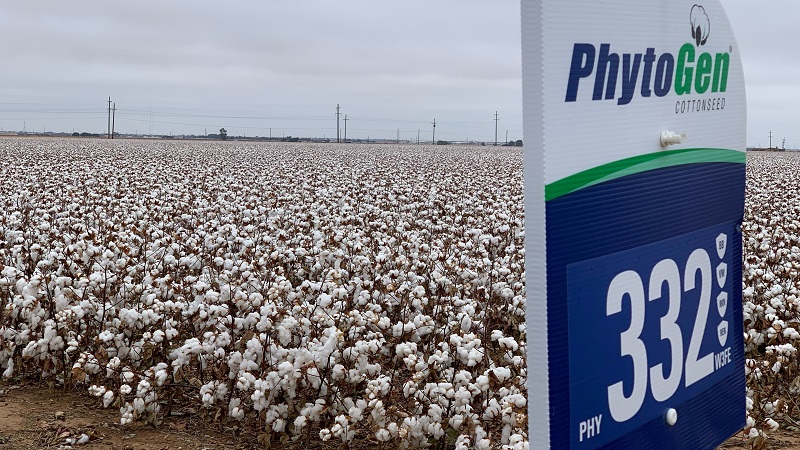CROP SCAN AgReport – Week of May 18
Taking a Field Level Look at the 2020 Growing Season
The 2020 growing season is off and running across the Cotton Belt. But it’s hard to recall a year with so many speedbumps and obstacles that threaten to derail this year’s crop. The weather’s either been too wet and cold or too dry. Market prices make profitability difficult. And then there’s that whole COVID-19 pandemic that has turned life upside down and put a real damper on cotton demand.
With a new crop going in the ground and tough financial decisions tied to every weed and insect treatment and crop management need, it’s more important than ever to know exactly what’s going on across your acres and be able to plan – and sometimes react – the smartest way possible.
That’s why Cotton Grower is launching the CROP SCAN AgReport for the bulk of this growing season. We’ve built a team of highly respected cotton consultants from key geographies to provide their insight and recommendations based on what they’re seeing in their areas. Watch for it every two weeks at CottonGrower.com, on our Facebook and Twitter pages and in the Cotton Grower eNews.
Wes Briggs is an independent consultant that has worked with growers in Georgia, Alabama and Florida for more than 30 years. The Mississippi State University graduate covers about 10 counties in the tristate area. He and his scouting team check primarily cotton, corn, peanuts, soybeans and some small grains. His services include weed, disease and insect management, along with fertility recommendations and variable rate soil sampling.
“In our area, cotton is going to be down a little this season. Some of those acres are going into corn, and there will be a little bit more acreage of peanuts. But it is not going to be much of a deviation from normal acreage because people stick with their rotations, mainly because of peanuts.
“We have been slow getting good stands in April and into early May because of cool mornings and low humidity. In mid-May, we were beginning to get ideal conditions, and I am guessing growers in the area were probably 25% to 30% planted, which is about normal for that time.
“With the warmer winters we’ve been having the past couple of seasons, whiteflies have emerged as the biggest worry among insect pests. They have really hit us later in the year when the cotton is already getting pressure from nematodes and heat stress. Lately, anything planted after June 10, we’ve seen yields fall off because of that pressure. Three or four years ago that was not true. We’d get some high-yielding cotton planted after June 10 up to about June 20. I am convinced whiteflies put a different type of stress on cotton and can impact yields as much as any pest.
“For weeds, everything we do is centered around escaped [resistant] pigweed. We really try to focus on starting clean. We begin over lapping residual herbicides in that 14 to 21 range days after crops emerge. Our goal is to remain 100% pigweed free.”
Tucker Miller is a Mississippi-based independent private consultant for cotton, soybeans, corn, peanuts, rice and vegetables. He earned a BS in Agronomy and MS in Pest Management from Mississippi State University and is a member and past president of the Mississippi Agricultural Consultants Association.
“In our area it has been a cool, wet spring. May 5–11 was the coldest period on record.
“This is our prime cotton planting window. Our first planting was May 1 and 2. This cotton came up in 5 days. Later plantings took 10 days to emerge and struggled in the cold weather. We hope to finish our planting the weekend of May 15 and 16. We finally got some warm nights, and this last planting should come up nicely. We are applying our pre-emerge herbicides behind the planters.
“By the first part of June, we will be looking for early season insects such as thrips, spider mites and cutworms. We will also be making our post emerge herbicide treatments for grass and broadleaf weeds. Pigweed is the driver weed in our area. We will also be monitoring plant bugs on our early planted cotton and will also start looking at PGR applications mid-June on our aggressive varieties.”
Mark Nemec is a Texas independent agricultural consultant who covers the Blacklands and Brazos River Bottom area of Central Texas. He primarily checks cotton, wheat, grain sorghum and corn, as he has for the last 26 years.
“Cotton in Central Texas has, for the most part, come up to a good stand. Weed pressure has been very high to start out due to abundant spring rainfall. Growers have been treating this as quickly as Mother Nature will let them in between all the wind, rain and mud. So far, we have produced good control. We have also experienced cooler nights this spring that slowed down cotton growth.
“With the extensive vegetation and warm, dry weather this spring, insect pressure is starting to increase with thrips, primarily on the younger cotton. Farmers will also need to keep a close eye out for flea hoppers moving in as wildflowers dry down. After all, April showers bring May flowers…and May flowers bring June fleahoppers!”













